Marketing Benchmark Series: GSK Pharmaceuticals
For the second post in this big pharma marketing benchmark series, we look at GSK.
Previously, within this series of looking into some of the marketing activities conducted by pharma organisations, we looked at Novartis. This time, we focus on GSK, currently the sixth-largest pharma company in the world, British-based GlaxoSmithKline.
In this marketing benchmark series, we’ll look at some of the marketing activities conducted by GSK to get a glimpse into the organisation’s marketing strategies and tactics. A Marketing Week article surfaced in 2016 that featured GSK’s Northern Europe Marketing Director, Rachel Deans, who was determined to place the pharmaceuticals giant at the forefront of digital innovation. We’ll attempt to glance at what has happened since (and before) then, which will focus largely on culture.
Subscribe for marketing insights via email
GSK has a global presence in nearly one hundred and fifteen countries and employs served a workforce of approximately 90,000. One of the organisation’s largest markets is the US - with key headquarters in Philadelphia, North Carolina and Pennsylvania. GSK relies heavily on its R&D facilities just like any pharmaceutical organisation and is the biggest funder of R&D in the UK private sector, with additional R&D sites in United States, United Kingdom, India, France, Croatia, China and Canada.
SWOT ANALYSIS
Similar to its competitors, GSK is globally positioned with offices across the globe who will have highly skilled staff on their books. A large market share (6th largest pharmaceutical company with $44.27bn in revenues according to Pharmaceutical Technology) puts them in a strong competitive position. But like many similar organisations, they have a high dependency on only several products with is risky when patents expire and generics are always being introduced. To help combat this, GSK has already addressed its historic lack of focus on digital and will keep on conducting licencing deals (such as the joint venture with Pfizer) in the face of rising costs of drugs and drug manufacturing.
JOINT VENTURE WITH PFIZER
Last year, GSK completed a transaction with Pfizer to form new world-leading Consumer Healthcare arm. As the GSK site states: The Joint Venture brings together two highly complementary portfolios of trusted consumer health brands, including GSK’s Sensodyne, Voltaren and Panadol and Pfizer’s Advil, Centrum and Caltrate. Underpinned by science-based innovation, it is the global leader in OTC products and has number 1 or 2 market share positions in all key geographies, including the US and China. Long term, this could mean a new company to sell, but in the meantime, keep your eyes our for some joint venture marketing noise soon as the entity will look to make sales and increase market share…
AN INTERNAL CULTURE SHIFT
In an attempt to shift internal culture, initially through its procurement, GSK has aligned its procurement processes alongside marketing to help both departments achieve its goals. Since a pharmaceutical’s employees often hold the keys to competitive advantage, this is a smart move. ProcureCon Pharma state: Marketing and procurement departments at GSK are actively encouraged to hold joint strategy sessions at least once a year to help foster this mentality of a single company with symbiotic goals. The plan is to eventually have all teams working in a more connected fashion to help make sure everyone at GSK is aligned and working as one to achieve the aims of the business.
BRINGING MORE DUTIES IN-HOUSE
Similarly, from a personnel perspective, Scott Grenz, Vice President/Global Head of Media at GSK discussed the organisation’s recent shift (on WARC) to being more talent, specifically media duties, in-house: “From a personnel perspective, the types of people that we need this year and the types we’ll need next year are likely to change as well.” And for the agencies that it does hire: “There needs to be a common bond between brands and their agencies to create trust and a collaborative atmosphere that’s based on transparency and openness. That’s the only way that the industry is going to really progress. We have to figure out a way to work together.”
DIGITAL TRANSFORMATION
Similar to many pharmaceutical organisations throughout the supply chain, GSK has developed a new focus on digital in the past few years. Their aim is to deliver more meaningful interactions with consumers, fuel brand growth and achieve efficiency savings. This was done by hiring new digital talent, hiring a new media agency and developing new partners as well as allocate more budget towards digital, where they claim to see a higher return. Similarly, GSK boosted their attractiveness in e-commerce channels by optimising the findability of products, developing rich content for retailer portals and securing high-profile ads on e-commerce sites.
FOCUSSING ON THE AREAS THAT DRIVE RETURN
GSK’s overall marketing and innovation resources are targeted on the brands which deliver them the strongest growth and highest returns, as stated in their Annual Report from the previous year. This would constitute their seven global “power brands”, including Sensodyne, Voltaren, Panadol and Theraflu, and the 12 regional core brands, such as Tums and Excedrin. Together, these brands drive performance of Consumer Healthcare and reinforce our global leadership in pain relief, respiratory and therapeutic oral health.


